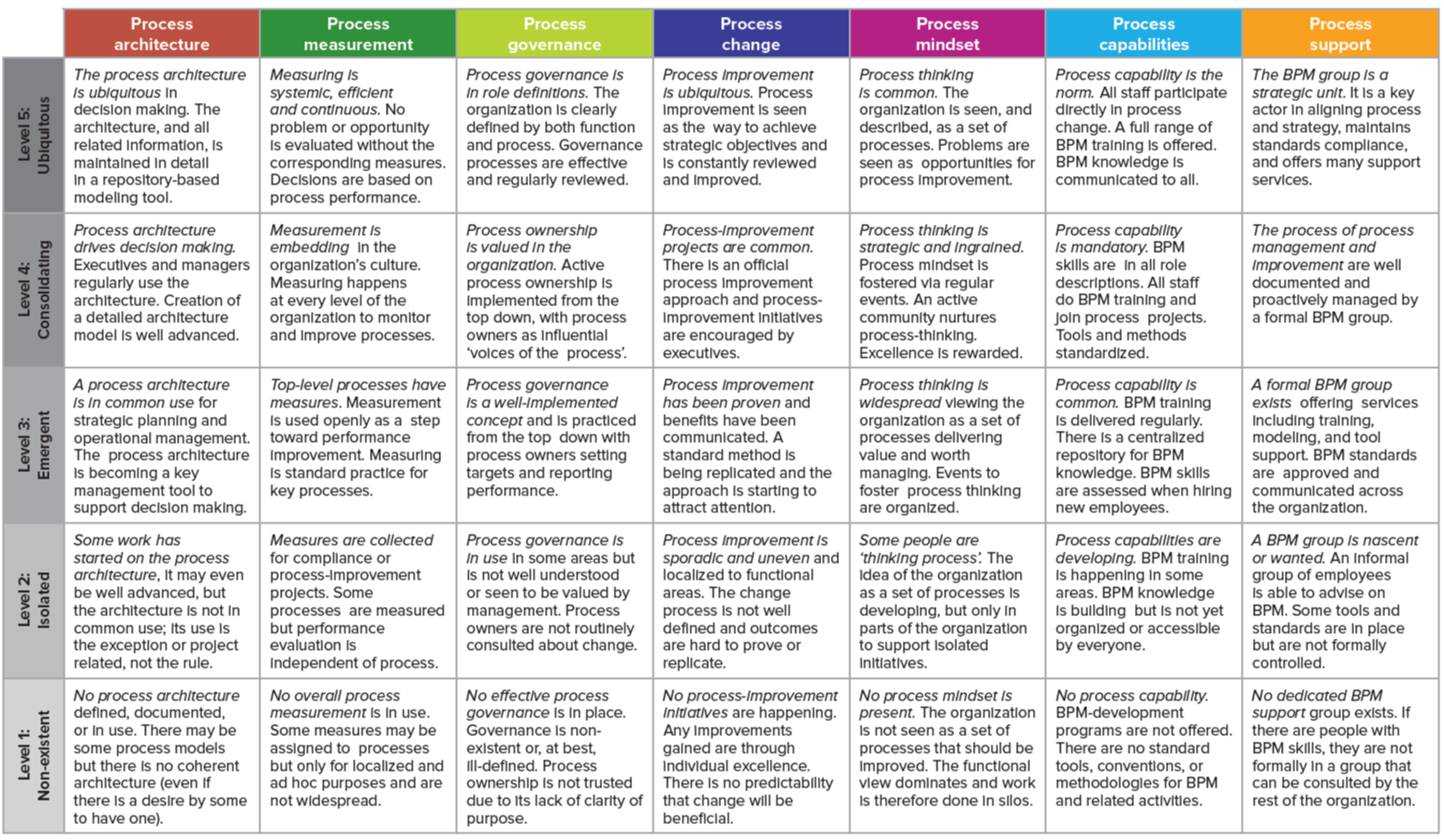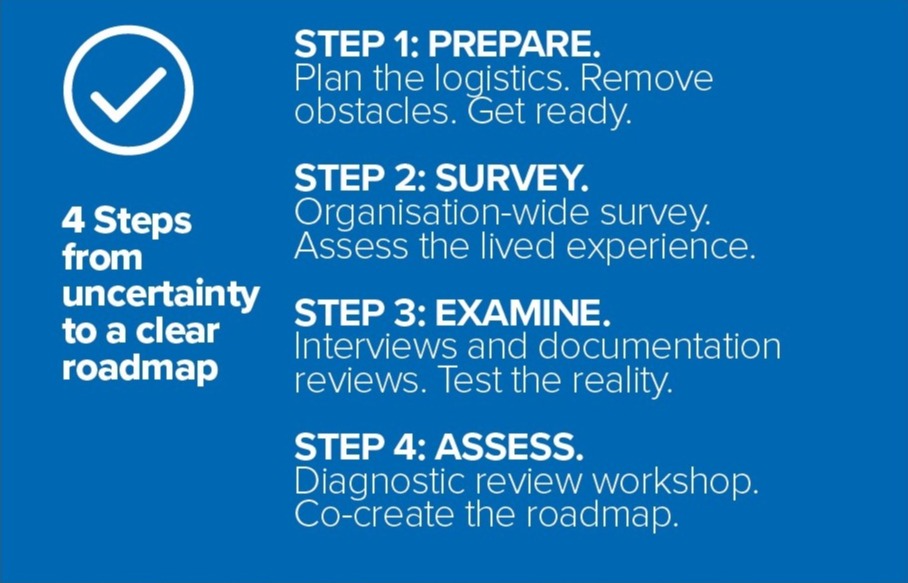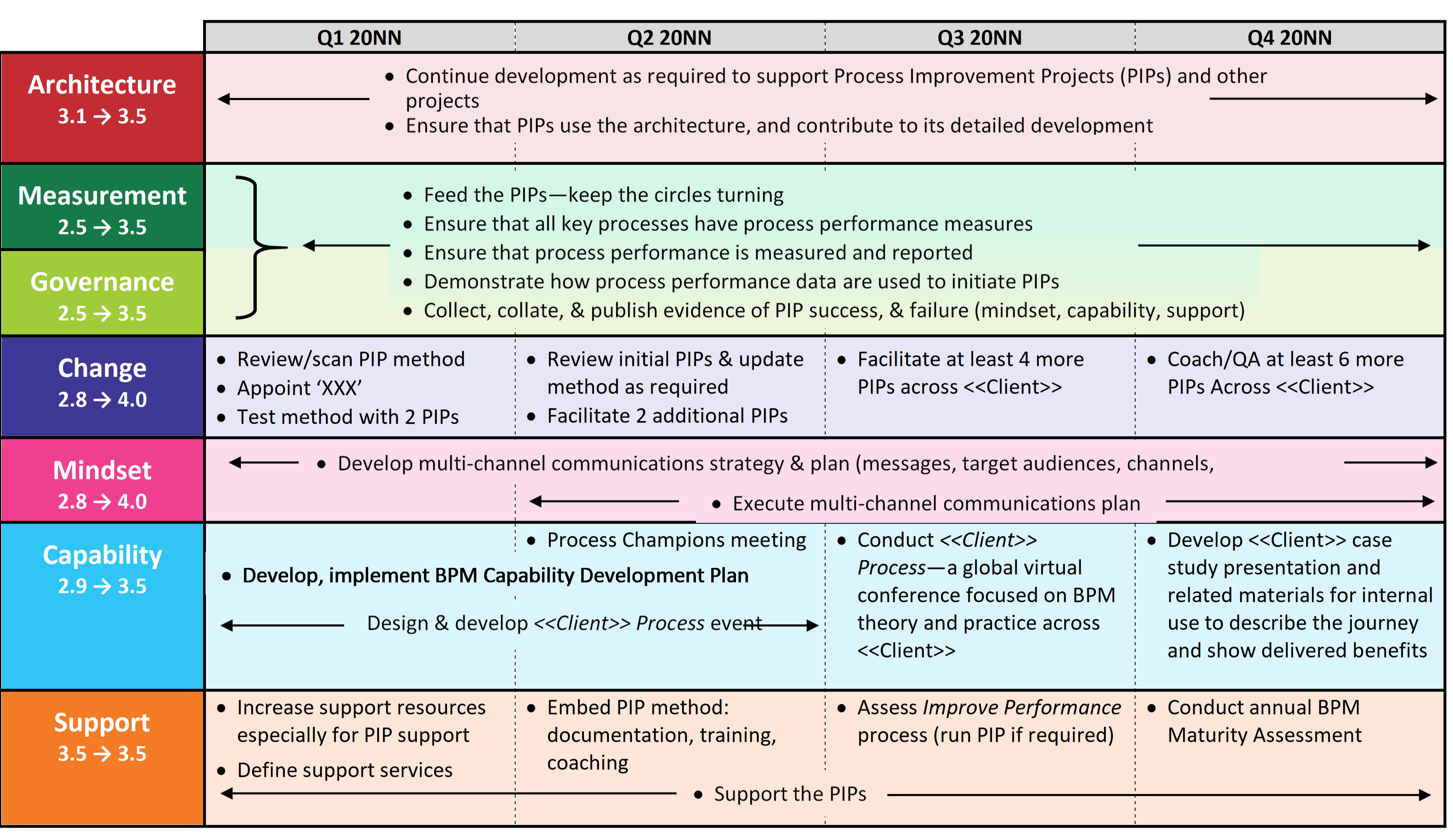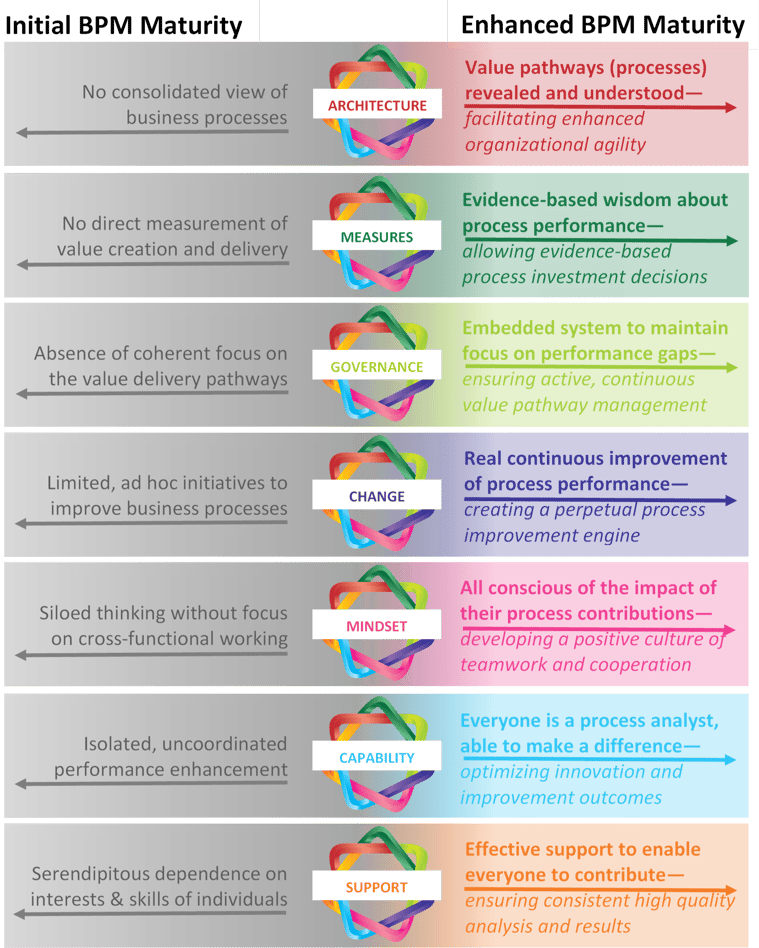Processes deliver
Every organization makes promises to customers and other stakeholders. Such promises are its reason for existence and are shaped as value propositions in the organizational strategy.
Traditional management follows the organization chart with most management activity directed up and down that chart. But how do we get work done? How do we deliver on those promises? We work in collaboration across the organization, not up and down. Is there any box on that chart that can, by itself, deliver products or services externally? No there is not, that’s not the way it works. Processes deliver on our promises.
Obviously, we must manage these cross-functional processes. This means knowing what they are, how they should perform and are performing, and having a new role to respond to ‘horizontal’ performance anomalies and opportunities. This is process-based management, something every organization should do well and continuously improve.
Our best performing process should be the process of process improvement.
Measuring process performance
There are three ways we should measure process performance. One, the most important, is often overlooked.
We need, most importantly of all, hard data about process performance, in particular about performance improvement. Did we reduce the process execution time? Did customer satisfaction go up? Were costs reduced? We also need ‘soft’ data about process performance. Do customers have a good opinion of our processes? Are staff happier in process execution? Are we getting positive testimonials and recommendations?
There’s a third dimension we must be measuring. If process management and improvement is fundamental to optimizing performance, then we must be sure we are not only good at it, but also getting better all the time. Our most efficient and effective processes should be the processes of process management and improvement. That’s BPM maturity and it must be measured and developed.
Assessing BPM maturity
Capability maturity models have a long history beginning with software development. The five-level maturity model has been used in many other areas, including BPM. At maturity level 1 we can’t spell BPM, at level 5 it has become so ubiquitous as to have virtually disappeared, from conscious thought at least.
As shown in Figure 1 we can combine those five levels with the 7Enablers of BPM to give greatly increased maturity analysis granularity and a very practical assessment and development tool. Having this extra level of maturity assessment means we can make much more specific plans to address more specific issues and deliver real maturity improvements. Figure 1: BPM maturity & the 7Enablers
Figure 1: BPM maturity & the 7Enablers
Leonardo BPMM Assess
We need hard data about BPM maturity and its development pathway.
Leonardo provides a BPM maturity assessment service. Called BPMM Assess, it combines the ‘power of the crowd’, rigorous analysis, and deep experience, in a non-intrusive format, resulting in a BPM maturity development roadmap. It is designed to take a practical middle road between time-consuming, labor-intensive, and expensive approaches, and the trivialization of maturity assessment often represented by simplistic, uncontrolled surveys.

Figure 2: Four-step BPM maturity assessment
BPMM Assess has three phases: (i) an online survey that is completed by as many staff members as possible, (ii) an examination phase during which reference documentation is analyzed and interviews with selected key BPM stakeholders are conducted, and (iii) a diagnostic review workshop that facilitates co-creation of the BPM maturity development roadmap.
Preparation is easy and fast. We’ve produced the BPM Maturity Assessment Handbook to help with this, and all other, stages.
The online survey is easy to complete, requires no specialist knowledge, takes about 15 minutes, and is done from a web browser on any screen.
The survey gives us the subjective opinion of those who respond, and while that is very useful, it must be tested against objective reality. An experienced consultant examines documentation, e.g. process architectures, performance reporting, and interviews selected staff. An adjusted current assessment of maturity, by enabler and overall, is then available.
 Figure 3: BPM maturity levels—current and future
Figure 3: BPM maturity levels—current and future
What do we want the assessment to be in, say, 12 months? What do we need to do to close the gaps? These are the questions addressed in the BPM Maturity Diagnostic Workshop.
The result is not just a maturity assessment but also a roadmap of initiatives, by enabler, to ensure the development of BPM maturity as planned.
Enhancing BPM maturity
Maturity in each of the BPM enablers will not ‘automatically’ increase. We need targeted development plans of properly sequenced activities. Once we have a well-considered BPM development roadmap—Figure 4 is a fictitious example—execution of the planned activities will support the achievement of the target maturity levels at the next assessment.
To achieve and sustain process-based management we need the full mix of all seven enablers to be developing together. Lose any one of them and the balance is upset, leading to failure. It is not enough to just hope that each enabler will develop automatically. A proactive plan and tracking mechanism are needed for each enabler to ensure success.
What are the consequences of a missing enabler? In Table 1 summarizes the impact of each enabler (alone) being missing, or not well developed, from the management mix.
 Table 1: Missing Enablers
Table 1: Missing Enablers
Any missing, or misfiring, enabler will impede development of process-based management.
 Figure 4: BPM Maturity Development Roadmap
Figure 4: BPM Maturity Development Roadmap
Superpower ascendancy
The achievement of increasingly higher levels of BPM maturity has profound positive effects on an organization. It’s not just the high score result that is the benefit, it’s also the much wider effect of the conscious, collaborative effort required to understand, target, and achieve that result—the journey and the destination.
These are some important effects of the well-developed BPM maturity superpower:
- Increased organizational agility—deep knowledge of the high-impact processes means that changes can be made more easily, quickly, and safely.
- Enriched customer journeys—the customer journey happens along our processes; better processes, better journey.
- Improved organizational performance—actively managing the processes that deliver value will improve performance where it really matters.
- Enhanced organizational culture—the whole organization consciously working together to improve cross-functional performance creates a positive culture change.
- Better technology outcomes—technology is one way to improve process performance; better process knowledge means better technology solutions
- Superior decision performance—continuous evidence-based decision making about anomalies and opportunities that really matter leads to much better decisions.
Effective organizational management requires effective process management. Effective process management requires knowledge of the processes leading to process performance improvement. Organizations with higher levels of BPM maturity are better at doing this.
BPM maturity (BPMM) is mission-critical for every organization. A higher level of BPM maturity means increased control, agility, resilience, responsiveness, and sophistication in process analysis, improvement, innovation, and management—leading directly to higher levels of organizational performance.
Developing your Superpower
Superpower training, i.e. the BPMM Assess service, is available anywhere on the planet (and beyond if we can get a connection!). We can deliver onsite or remotely. It just needs a little of your time and a desire to make a profound difference.
Want to know more? Read this and this Figure 5: The 7Enablers BPM maturity journey
Figure 5: The 7Enablers BPM maturity journey





